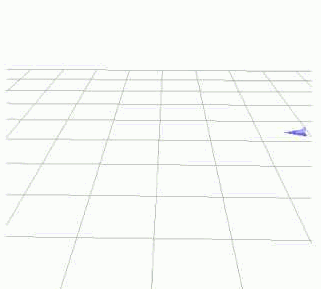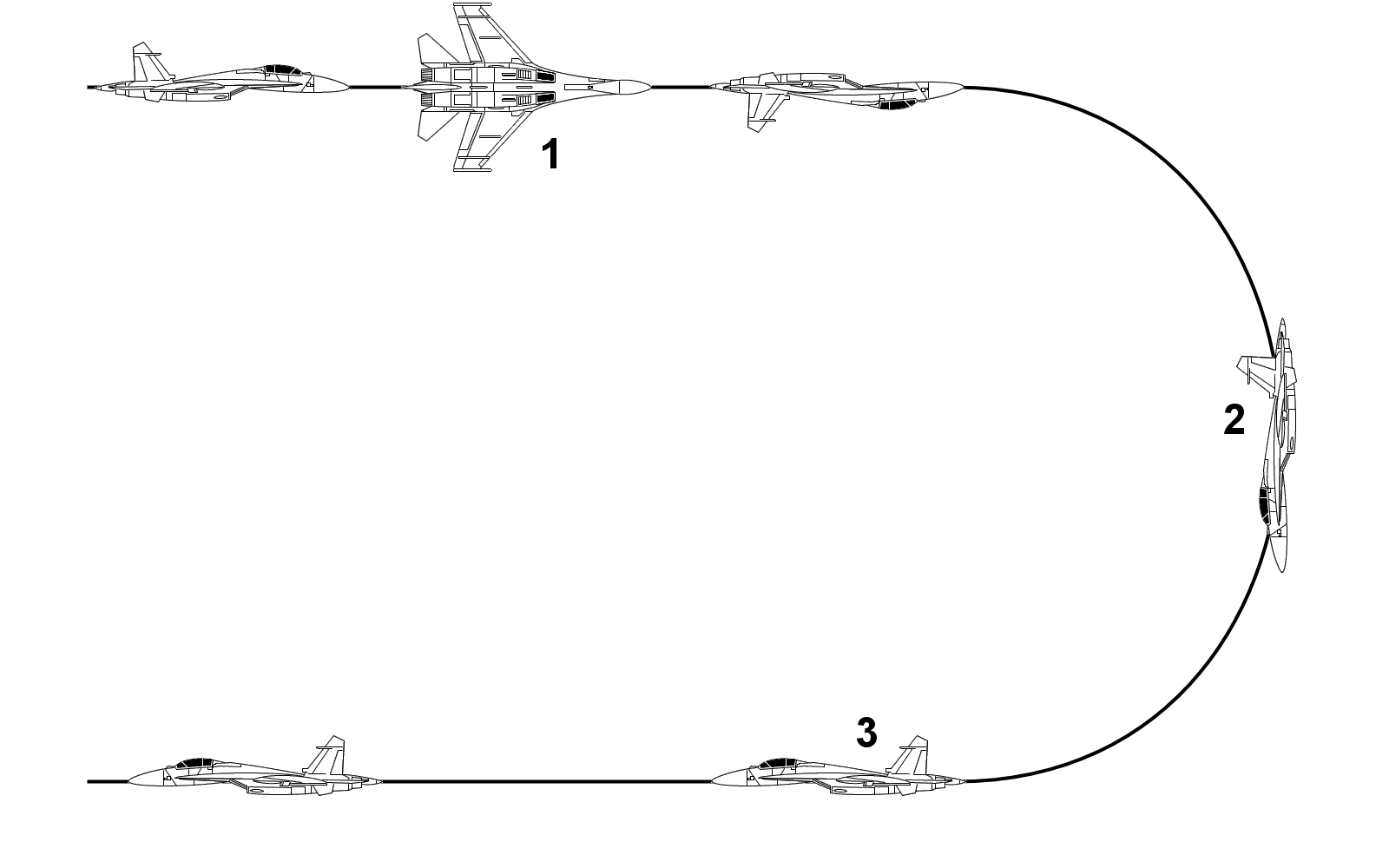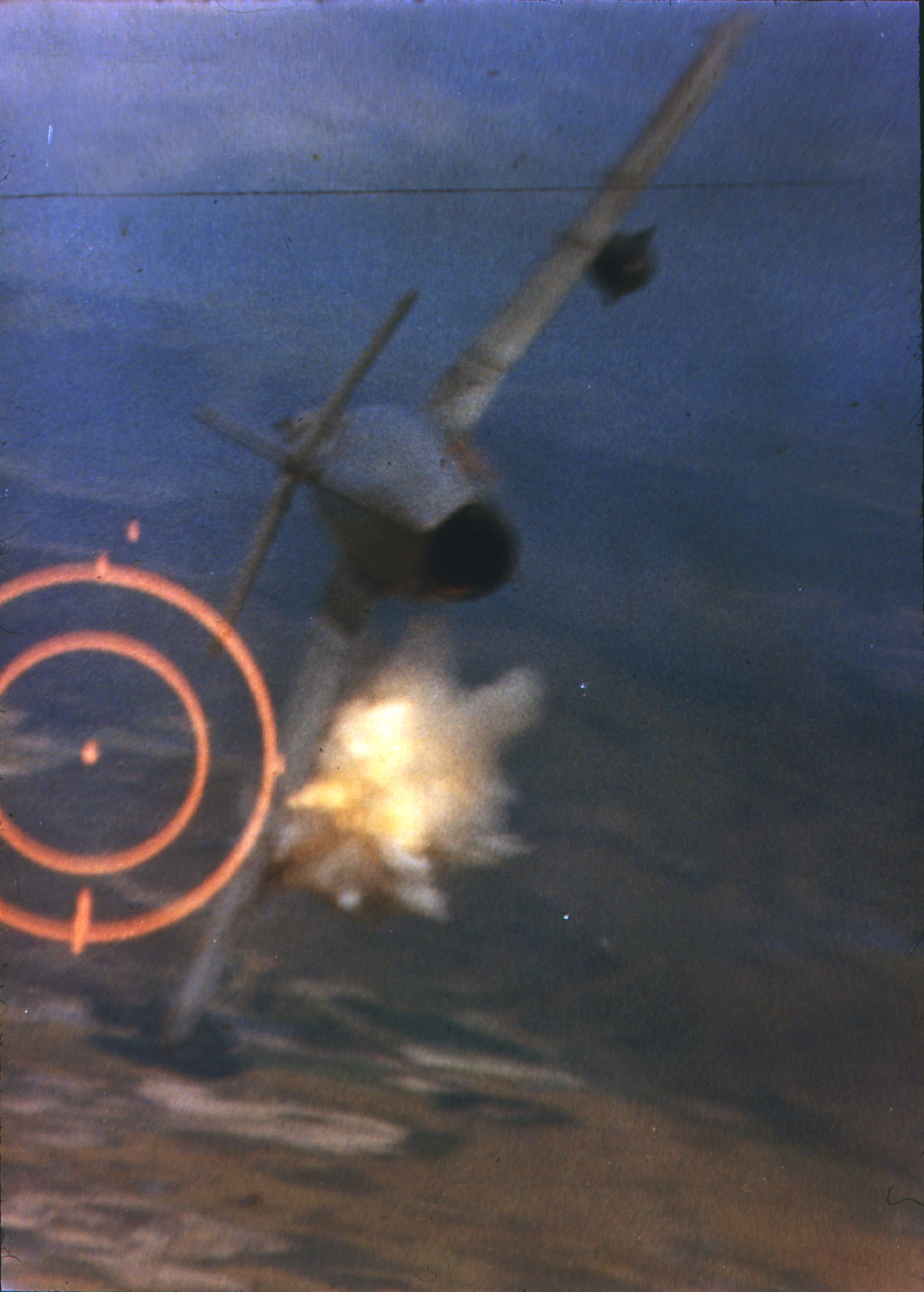|
Immelman Turn
The term Immelmann turn, named after German World War I Eindecker fighter ace Lieutnant Max Immelmann, refers to two different aircraft maneuvers. In World War I aerial combat, an Immelmann turn was a maneuver used after an attack on another aircraft to reposition the attacking aircraft for another attack. In modern aerobatics, an Immelmann turn (also known as a roll-off-the-top, or simply an Immelmann) is an aerobatic maneuver that results in level flight in the opposite direction at a higher altitude. Historical combat maneuver In World War I aerial combat, an Immelmann turn (named for the German air ace Max Immelmann) was a maneuver used after an attack on another aircraft to reposition the attacking aircraft for another attack. After making a high-speed diving attack on an enemy, the attacker would then climb back up past the enemy aircraft, and just short of the stall, apply full rudder to yaw his aircraft around. This put his aircraft facing down at the enemy aircraf ... [...More Info...] [...Related Items...] OR: [Wikipedia] [Google] [Baidu] |
Immelman
Immelman is a surname. Notable people with the surname include: * Henry Immelman (born 1994), South African rugby union footballer * Mark Immelman (born 1970), South African sportscaster * Nicolaas Immelman (born 1993), South African rugby union footballer * Niel Immelman (born 1944), South African classical pianist * Quinton Immelman (born 1981), South African rugby referee * Trevor Immelman Trevor John Immelman (born 16 December 1979) is a South African professional golfer who has played on the PGA Tour, European Tour and Sunshine Tour. He won his sole major championship at the 2008 Masters Tournament. Early years Immelman was bor ... (born 1979), South African professional golfer See also * Hans Imelmann (1897–1917) WWI flying ace * Immelmann (other) * {{surname ... [...More Info...] [...Related Items...] OR: [Wikipedia] [Google] [Baidu] |
Aircraft Principal Axes
An aircraft in flight is free to rotate in three dimensions: '' yaw'', nose left or right about an axis running up and down; ''pitch'', nose up or down about an axis running from wing to wing; and ''roll'', rotation about an axis running from nose to tail. The axes are alternatively designated as ''vertical'', ''lateral'' (or ''transverse''), and ''longitudinal'' respectively. These axes move with the vehicle and rotate relative to the Earth along with the craft. These definitions were analogously applied to spacecraft when the first manned spacecraft were designed in the late 1950s. These rotations are produced by torques (or moments) about the principal axes. On an aircraft, these are intentionally produced by means of moving control surfaces, which vary the distribution of the net aerodynamic force about the vehicle's center of gravity. Elevators (moving flaps on the horizontal tail) produce pitch, a rudder on the vertical tail produces yaw, and ailerons (flaps on the win ... [...More Info...] [...Related Items...] OR: [Wikipedia] [Google] [Baidu] |
The Scissors
The scissors is an aerial dogfighting maneuver commonly used by military fighter pilots. It is primarily a defensive maneuver, used by an aircraft that is under attack. It consists of a series of short turns towards the attacking aircraft, slowing with each turn, in the hopes of forcing the attacker to overshoot. Performed properly, it can cause the attacking aircraft to move far enough in front to allow the defender to turn the tables and attack. The scissors is a close-maneuvering technique, and as such, is really only useful when defending against guns or low-performance missiles. It was a major technique from World War I to the Korean War, but is much less common today. The introduction of high-angle missiles makes it much less effective, as the attacker can shoot even when the defender is not in front of them. Modern aircraft also make it difficult to use this technique as they maintain energy much better than earlier designs and the maneuvering limits are often the pilot' ... [...More Info...] [...Related Items...] OR: [Wikipedia] [Google] [Baidu] |
Chandelle
The ''chandelle'' is an aircraft control maneuver where the pilot combines a 180° turn with a climb.Crane, Dale: ''Dictionary of Aeronautical Terms, third edition'', page 102. Aviation Supplies & Academics, 1997. Aircraft Owners and Pilots Association. Retrieved 2016-02-11. It is now required for attaining a commercial certificate in many countries. The in the United States requires such training. The ''chandelle'' (which is the French word for candle) is a precision aircraft contr ... [...More Info...] [...Related Items...] OR: [Wikipedia] [Google] [Baidu] |
Split S
The split S is an Aerobatic maneuver and an air combat maneuver mostly used to disengage from combat. To execute a split S, the pilot half-rolls their aircraft inverted and executes a descending half-loop, resulting in level flight in the opposite direction at a lower altitude. Description The split S is taught to be used in dogfighting when the pilot has the opportunity to withdraw from battle. It can be an effective tactic to prevent an enemy behind (between four o'clock and eight o'clock positions) from gaining a missile lock-on while one is disengaging from a fight. The split S is contrasted with the Immelmann turn, which is an ascending half-loop that finishes with a half-roll out, resulting in level flight in the opposite direction at a higher altitude. The split S is also called a reversed Immelmann turn and can also be written with a hyphen: split-S. In basic terms, the Immelmann and split S are very similar, both accomplishing the same reversal in course, but the sp ... [...More Info...] [...Related Items...] OR: [Wikipedia] [Google] [Baidu] |
Dogfight
A dogfight, or dog fight, is an aerial battle between fighter aircraft conducted at close range. Dogfighting first occurred in Mexico in 1913, shortly after the invention of the airplane. Until at least 1992, it was a component in every major war, though with steadily declining frequency. Since then, longer-range weapons have made dogfighting largely obsolete. Modern terminology for air-to-air combat is air combat maneuvering (ACM), which refers to tactical situations requiring the use of individual basic fighter maneuvers (BFM) to attack or evade one or more opponents. This differs from aerial warfare, which deals with the strategy involved in planning and executing various missions. Etymology The term ''dogfight'' has been used for centuries to describe a melee: a fierce, fast-paced close quarters battle between two or more opponents. The term gained popularity during World War II, although its origin in air combat can be traced to the latter years of World War I. One of ... [...More Info...] [...Related Items...] OR: [Wikipedia] [Google] [Baidu] |
Immelmann Turn
The term Immelmann turn, named after German World War I Eindecker fighter ace Lieutnant Max Immelmann, refers to two different aircraft maneuvers. In World War I aerial combat, an Immelmann turn was a maneuver used after an attack on another aircraft to reposition the attacking aircraft for another attack. In modern aerobatics, an Immelmann turn (also known as a roll-off-the-top, or simply an Immelmann) is an aerobatic maneuver that results in level flight in the opposite direction at a higher altitude. Historical combat maneuver In World War I aerial combat, an Immelmann turn (named for the German air ace Max Immelmann) was a maneuver used after an attack on another aircraft to reposition the attacking aircraft for another attack. After making a high-speed diving attack on an enemy, the attacker would then climb back up past the enemy aircraft, and just short of the stall, apply full rudder to yaw his aircraft around. This put his aircraft facing down at the enemy aircraf ... [...More Info...] [...Related Items...] OR: [Wikipedia] [Google] [Baidu] |
Wingover
A wingover (also called a wing-over-wing, crop-duster turn or box-canyon turn) is an aerobatic maneuver in which an airplane makes a steep climb, followed by a vertical flat-turn (the plane turns to its side, without rolling, similar to the way a car turns). The maneuver ends with a short dive as the plane gently levels out, flying in the opposite direction from which the maneuver began. Sequence and use The aircraft makes a tight, 180 degree change in heading while covering minimum horizontal distance. The maneuver begins by making roughly a quarter loop, bringing the plane up into a vertical or near-vertical climb, allowing the airspeed to drop. Before the airplane stalls (begins to fall) the pilot applies hard rudder input, bringing the plane into a sweeping, vertical flat-turn, during which the wing swings over the top of the turn toward the direction of the nose. Both the lowered airspeed and gravity provide assistance with the turn, similar to a stall turn (hammerhead t ... [...More Info...] [...Related Items...] OR: [Wikipedia] [Google] [Baidu] |
Air Ace
A flying ace, fighter ace or air ace is a military aviator credited with shooting down five or more enemy aircraft during aerial combat. The exact number of aerial victories required to officially qualify as an ace is varied, but is usually considered to be five or more. The concept of the "ace" emerged in 1915 during World War I, at the same time as aerial dogfighting. It was a propaganda term intended to provide the home front with a cult of the hero in what was otherwise a war of attrition. The individual actions of aces were widely reported and the image was disseminated of the ace as a chivalrous knight reminiscent of a bygone era. For a brief early period when air-to-air combat was just being invented, the exceptionally skilled pilot could shape the battle in the skies. For most of the war, however, the image of the ace had little to do with the reality of air warfare, in which fighters fought in formation and air superiority depended heavily on the relative availability ... [...More Info...] [...Related Items...] OR: [Wikipedia] [Google] [Baidu] |
German Empire
The German Empire (),Herbert Tuttle wrote in September 1881 that the term "Reich" does not literally connote an empire as has been commonly assumed by English-speaking people. The term literally denotes an empire – particularly a hereditary empire led by an emperor, although has been used in German to denote the Roman Empire because it had a weak hereditary tradition. In the case of the German Empire, the official name was , which is properly translated as "German Empire" because the official position of head of state in the constitution of the German Empire was officially a "presidency" of a confederation of German states led by the King of Prussia who would assume "the title of German Emperor" as referring to the German people, but was not emperor of Germany as in an emperor of a state. –The German Empire" ''Harper's New Monthly Magazine''. vol. 63, issue 376, pp. 591–603; here p. 593. also referred to as Imperial Germany, the Second Reich, as well as simply Germany, ... [...More Info...] [...Related Items...] OR: [Wikipedia] [Google] [Baidu] |





